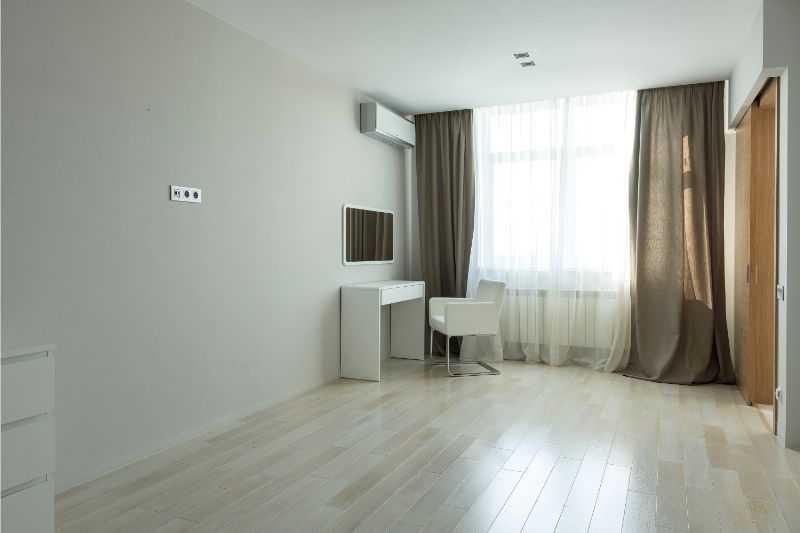The Impact of Clutter on Mental Health
Clutter, on the other hand, can have a detrimental effect on our mental health. Surrounded by an overwhelming amount of possessions, we often feel anxious, overwhelmed, and unable to fully relax in our own homes. This constant visual stimulation can lead to increased stress, difficulty concentrating, and a general sense of unease.
Moreover, the presence of clutter can have a subconscious impact on our thought patterns, contributing to feelings of guilt, shame, and a lack of control. It can also hinder our productivity, as the physical disorganization can translate into mental disorganization, making it challenging to focus on the tasks at hand.
Benefits of a Clutter-Free Home
By embracing minimalism and creating a clutter-free home, we can unlock a myriad of benefits that positively impact our mental health and overall well-being. A decluttered and organized living space can:
- Reduce Stress and Anxiety: A clean, uncluttered environment can help alleviate feelings of stress and anxiety, allowing us to feel more calm and centered.
- Enhance Concentration and Focus: Without the constant visual distractions of clutter, we can better focus on the present moment and the tasks we need to accomplish.
- Improve Sleep Quality: A serene, minimalist bedroom can promote better sleep by creating a more relaxing and soothing environment.
- Boost Productivity: By eliminating visual and mental clutter, we can streamline our workflow and increase our overall productivity.
- Cultivate a Sense of Calm and Clarity: A clutter-free home can foster a sense of peace and mental clarity, allowing us to feel more grounded and present in our daily lives.
Practical Tips for Decluttering and Organizing Your Home
Embarking on the journey of decluttering and creating a minimalist home can be both exciting and daunting. To make the process more manageable, here are some practical tips to guide you:
- Start Small: Begin by tackling one room or even one area at a time, rather than attempting to declutter your entire home at once.
- Adopt the „One In, One Out” Rule: Whenever you bring a new item into your home, make sure to remove an existing item to maintain a balanced and clutter-free environment.
- Utilize the „Four-Box Method”: Sort your belongings into four categories: keep, donate, recycle, and trash.
- Invest in Organizational Tools: Utilize storage solutions like shelves, bins, and baskets to keep your space tidy and visually appealing.
- Digitize and Declutter: Scan important documents and go paperless whenever possible to reduce physical clutter.
- Establish a Decluttering Routine: Set aside regular time, such as a weekend or a few hours each week, to maintain your decluttered home.
Minimalist Home Decor Ideas
Embracing minimalism in your home decor can further enhance the serene and calming atmosphere you’ve created. Some ideas to consider:
- Neutral Color Palette: Opt for a soothing color scheme with earthy tones, whites, and grays to create a sense of tranquility.
- Minimal Furniture: Choose clean-lined, functional furniture that serves your needs without overcrowding the space.
- Natural Lighting: Maximize natural light by using sheer curtains or keeping windows unobstructed.
- Minimalist Artwork: Incorporate a few carefully selected pieces of artwork or wall decor to add visual interest without overwhelming the space.
- Decluttered Surfaces: Keep countertops, tables, and shelves free of unnecessary items, allowing the beauty of the space to shine.
Creating a Minimalist Wardrobe
Extending the principles of minimalism to your wardrobe can have a profound impact on your daily life. By curating a capsule wardrobe of versatile, high-quality pieces, you can streamline your morning routine, reduce decision fatigue, and feel more confident in your personal style.
Some strategies for building a minimalist wardrobe include:
- Conduct a Closet Purge: Go through your closet, identifying items you no longer wear or that don’t align with your personal style.
- Invest in Timeless Essentials: Focus on building a wardrobe of versatile, high-quality basics that can be easily mixed and matched.
- Adopt a Neutral Color Palette: Stick to a neutral color scheme that allows you to create a cohesive, interchangeable wardrobe.
- Prioritize Quality over Quantity: Invest in fewer, but better-quality garments that will last you for years to come.
- Maintain a Capsule Wardrobe: Limit the number of items in your closet to create a streamlined, easy-to-manage wardrobe.
Mindfulness and Minimalism: Cultivating a Minimalist Mindset
Embracing minimalism is not just about decluttering your physical environment; it’s also about cultivating a minimalist mindset that permeates all aspects of your life. By incorporating mindfulness practices, you can deepen your understanding of minimalism and its transformative power.
Engage in regular meditation or mindfulness exercises to become more present and attuned to your thoughts, emotions, and the world around you. As you develop this heightened awareness, you’ll find it easier to let go of material attachments and focus on what truly matters.
Additionally, practice gratitude and appreciation for the possessions you do have, recognizing their value and purpose in your life. This shift in perspective can help you resist the temptation of accumulating more and more, allowing you to live a more intentional and fulfilling life.
Minimalism for Families: How to Involve Everyone in the Process
Embracing minimalism as a family can be a rewarding and transformative experience. It’s important to involve all family members in the process, ensuring that everyone’s needs and perspectives are considered.
Start by having open discussions about the benefits of minimalism and the importance of creating a clutter-free home. Encourage your children to participate in the decluttering process, allowing them to make decisions about their own belongings. This not only teaches them valuable lessons about mindfulness and responsibility but also helps them feel invested in the overall transformation.
Establish family-wide guidelines and routines, such as regular decluttering sessions or a „no-buy” challenge, to maintain a minimalist lifestyle. Celebrate your progress and the newfound sense of calm and clarity that a clutter-free home brings.
Embracing Minimalism in Other Areas of Your Life
The principles of minimalism can extend far beyond your physical living space, positively impacting various aspects of your life. Consider applying minimalist strategies to your digital life, social media usage, and even your schedule and commitments.
Declutter your digital devices, unsubscribe from unnecessary emails and notifications, and curate your social media feeds to align with your values and interests. This can help reduce the mental clutter and distractions that often plague our modern, technology-driven lives.
Additionally, examine your schedule and commitments, identifying and letting go of activities or obligations that no longer serve you. By prioritizing your time and energy, you can create more space for the things that truly matter, fostering a greater sense of balance and well-being.
Conclusion: The Transformative Power of a Clutter-Free Home
Embracing minimalism and creating a clutter-free home is a transformative journey that can profoundly impact your mental health, emotional well-being, and overall quality of life. By letting go of the excess and focusing on what truly matters, you can cultivate a sense of serenity, clarity, and purpose that permeates every aspect of your life.





